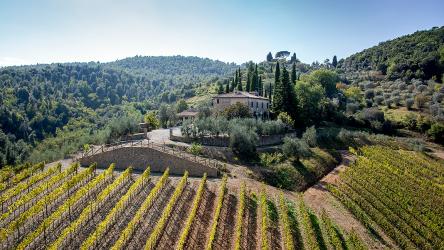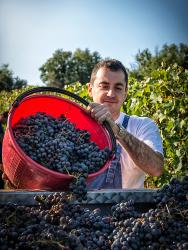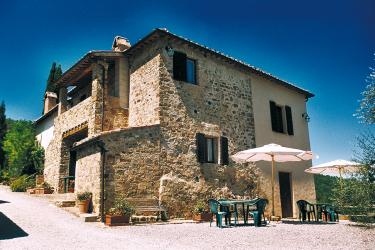North of the equator, if the weather cooperates in June, July and August, the world’s vineyards grow lush and verdant. Much like the avid St. Louis gardener, it is during this period that the experienced vignerons, winemakers and vineyard managers know that their role is largely to ensure that the vines take fullest advantage of what Mother Nature may throw at them, as their leaves grow larger and greener, and their fruit matures.
It is no accident that most of the areas from where the world’s best wines come are also major tourist destinations, especially in summer. The graceful vines, almost always in rows and usually in the traditional trellis-style growing system, where the plants climb up wooden stakes and across wires strung between each stake, add to the already picturesque hillsides and valleys where vineyards are most often found.
The Cortonese family has been most fortunate to tend to their vineyards in one of the most beautiful wine regions in Italy, just outside the Tuscan town of Montalcino. Long time Tuscan farmer Leonardo Cortonese planted a few Sangiovese grapevines on his land in 1970 (replacing some olive trees, which was the farm’s main crop at that time). They have grown into more than 19 acres in what is now considered the best parcels of the most famous parts in Italy’s fabled Tuscany wine region (made even more famous by the book and movie “Under the Tuscan Sun” and other romantic travelogue/home improvement-style novels).
Leonardo’s son Marco and his sons are making world-class Brunello di Montalcino from these incredibly dark and juicy grapes. Marco is in charge of vineyard management, while one son Tommaso, a college-educated oenologist, makes the wines, and another son, Giulio, works in winery management. Like all farming, it is hard work. But, when it’s taking place among such beautiful scenery as in this sun-kissed part of Italy, and your work is a labor of love, it is much more enjoyable.
The Cortonese farmhouse where Marco was raised – a typically rustic-looking Tuscan stone villa and barns dating back to the late 19th Century – sits on a rise, surrounded by the family’s vineyards.
In summer, it’s not uncommon for the family to dine al fresco on one of the farmhouses’ many patios. As this part of Italy sees many hot, sunny days, light fare is preferred. There may well be steaks grilling nearby that will be served with Tuscan white beans and roasted tomatoes. To start, the traditional Panzanella Salad is usually served. Stale Tuscan bread is softened in water and extra-virgin olive oil from La Mannella’s own trees, then tossed with balsamic vinegar, lettuce, diced tomatoes and cucumbers – the epitome of elegant simplicty. The steaks are a great match for the Brunellos while the Rosso di Montalcino is a better choice for the salad.
When you see how the Cortonese’s enjoy life while tending to their vineyards in summer, you can easily understand why so many people flock to Montalcino and other vineyard-laden wine regions around the world for a few days, a few weeks, or a lifetime.









